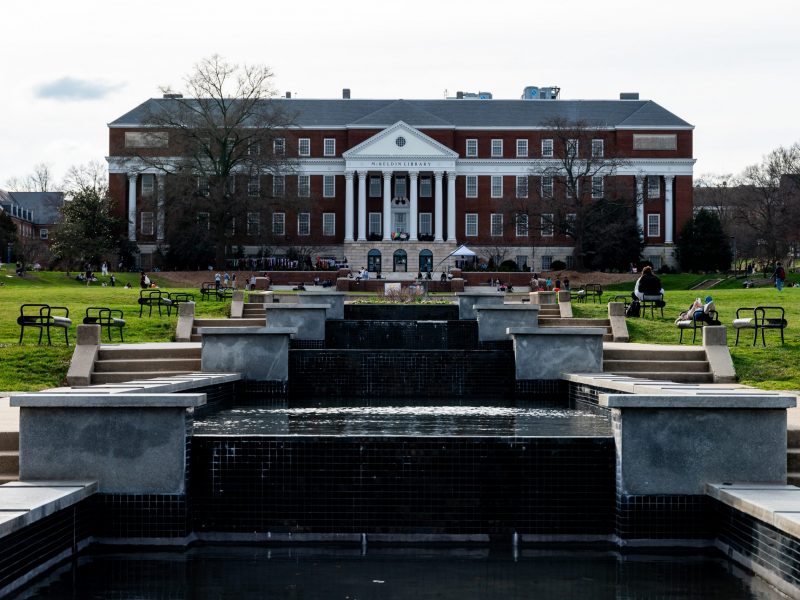With snowfall forecasted for tomorrow, the university has already started preparing the tools and staff needed to remove the snow quickly.
A small group of people with dashboards and laptops, though, are the real masterminds behind clearing the precipitation.
These few employees run this university’s Snow Command Center, which controls the snow removal operations with an interactive GIS-oriented mapping system and a staff of about 200 people.
“The number-one responsibility is keeping the roads open and accessible for emergency personnel,” said Bill Monan, associate director of landscape, arboretum and horticultural services on the campus. “We also prioritize the [University] Health Center and dining halls.”
About three people work at the Snow Command Center — located in the Wye Oak Building — during each snowstorm, Monan said. The center is set up in a conference room for each storm, and the staff’s laptops connect to a large TV that shows a map of the entire campus. The staff is on standby to take phone calls about the snow and report it on the map.
The map is “a global positioning system that is integrated with the UMD map system and has all the buildings, roads and parking lots on campus,” Monan said. The map is updated every hour and reports what percentage of snow removal is complete.
The colors of each parking lot, road and other parts of the campus change depending on the status of the snow cleanup. Blue means that a cleanup is in progress and red means that it is complete, Monan said. If someone calls in a spot on the campus that needs to be cleaned up, the staff at the command center will put a dot on the location and send a team out to clear the snow.
There are about five to seven team leaders on the campus that call in after their team has completed clearing an area. Each team has a certain quadrant on the campus, Monan said, and consists of about four to five people for shoveling, at least one tractor vehicle and at least one plow truck. In total, the staff consists of about 150 people. About 50 of them are state staff workers and the other 100 of them are electricians, plumbers, HVAC staff and housekeeping supervisors.
There are also two groups of contractors that have about 30 to 40 people each. They check in on the off-site properties that the university owns and shovel steps on the campus.
The last group consists of a night crew of staff that changes shifts at 6 a.m. and is a combination of contractors and staff of 10 people.
Monan himself arrives on the campus at 2 a.m. before a storm hits. By 4:30 a.m., he recommends if school should be delayed or closed to the provost, who makes the final decision. Monan then contacts communications officials, University Police and other departments. He sometimes stays on the campus for days after.
For the big snowstorm in 2010, staff didn’t go home for more than a week, Monan said. For the storm this past January, he was here for three days straight, and staff were on the campus 24/7.
“Most years my staff has worked holidays,” Monan said. “Christmas break we come in; we have worked Christmas Eve before, even New Year’s. If it is snowing, we are here.”
For tomorrow’s forecast, the goal is to make sure school is open by 8 a.m., Monan said. That means there has to be access to parking lots, the roads have to be clear, there is no ice and people can get into buildings.
“It is a very complicated process with many working parts,” Monan said. “The process is very changeable because storms can get worse. You have to be flexible and always have people available on-site; you can’t just wait for them to show up.”


